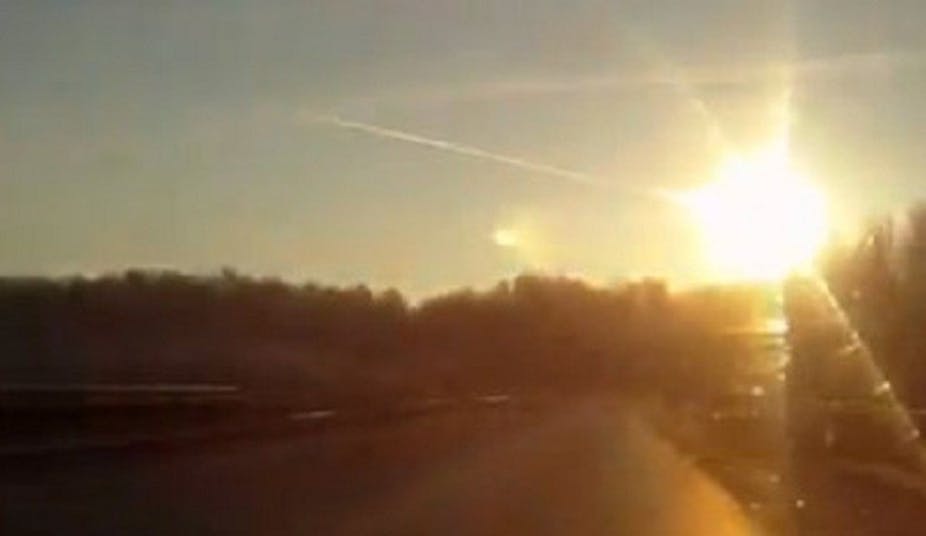A fireball has flown over Russia, delivering a sonic boom with enough force to shatter windows, amateur footage shows.
The astronomical event comes just one day before a large asteroid is expected to pass within 27,700km of Earth.
The Russian Emergencies Ministry was reported to have issued a statement saying a meteorite “disintegrated above the Urals, partially burning up in the lower atmosphere”. As many as 150 people were hurt in the blast, mostly by shards of glass, according to a Reuters report.
Amateur footage posted on YouTube showed the fireball shooting across the sky and the sound of a sonic boom with enough force to shatter window glass and set car alarms off.
Asteroid expert Phil Bland, ARC Laureate Fellow at Curtin University, said the footage appeared to be legitimate.
“It’s a very big fireball. It looks like the fireball itself lasts around 13 to 15 seconds. There’s a big flare at around 10 or 11 seconds and then it tapers off. The thing is huge,” he said.
“The trail that you see in the sky on the other videos is from dust that hangs in the air after the passage of the fireball. For the shock wave to break windows, the thing must have been massive. It’s amazing to get videos of something like this!”
The flash in the sky may have been a meteorite but “this sort of fireball can sometimes dump all its energy in the upper atmosphere, so all you might get at the surface is dust. We won’t know until they’ve had a chance to search,” said Dr Bland.
Dr Bland said the fireball could be connected to 2012 DA14, the asteroid expected to pass within range of communication satellites on Saturday morning.
“Is it connected to the flyby? A lot of folks would say ‘no’. Personally, I’ve always kind of liked the idea that there are streams of asteroid debris – so you can have smaller stuff that precede and trail a bigger object,” said Dr Bland.
“It seems like an awful big coincidence if it’s not connected.”
However, Simon O'Toole, Research Astronomer at Australian Astronomical Observatory was more cautious in linking the two events.
“It has been suggested that this is linked to 2012 DA14. I’m not so sure about this. It might be, but the Universe is filled with a lot of unusual coincidences. As pointed out elsewhere, DA14 is still half a million kilometres away, travelling at 8km per second, for a start! Could it be part of the asteroid that has broken away and reached Earth already? This seems unlikely to me,” said Dr O'Toole.
Dr O'Toole said a group of Finnish astronomers had identified the object as a meteor and said it was unlikely to be linked to the asteroid because it was coming from a different direction.
“If this was a meteor entering the atmosphere, it’s a stark reminder of how vulnerable we are and why we need to monitor the skies very closely for potentially larger objects.”
Further reading: Look out: close encounters of the asteroidal kind

